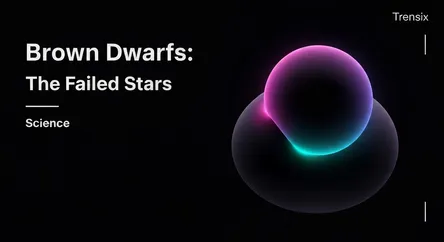Science
Brown Dwarfs: The Failed Stars

Discover brown dwarfs, the cosmic objects too massive to be planets but not massive enough to ignite as stars. Learn why they're trending.
What is it?
A brown dwarf is a type of substellar object, often called a "failed star." It possesses more mass than the largest gas giant planets but lacks the sufficient mass needed to sustain the nuclear fusion of hydrogen in its core, the process that makes stars like our Sun shine. While they don't burn hydrogen, the most massive brown dwarfs can fuse deuterium (a heavier isotope of hydrogen) early in their lives. They are incredibly dim and cool over time, glowing faintly in the infrared spectrum as they release their residual heat from formation.
Why is it trending?
Brown dwarfs are trending thanks to advanced telescopes like the James Webb Space Telescope (JWST). Its powerful infrared instruments are perfectly suited to peer through cosmic dust and study these faint objects in unprecedented detail. Recent JWST observations have revealed brown dwarfs with exotic atmospheres, including clouds made of silicates—essentially sand. These discoveries are challenging existing models of atmospheric physics and planet formation, making brown dwarfs a hot topic in astronomy.
How does it affect people?
While brown dwarfs have no direct impact on our daily lives, their study is fundamental to understanding our place in the universe. They bridge the gap between stars and planets, providing a crucial piece of the puzzle in how solar systems form. By studying their composition, temperature, and distribution, scientists can refine theories about star formation and the lower limits of a star's mass. This helps us better understand the variety of celestial bodies that exist and the conditions that might lead to the formation of planets like Earth.